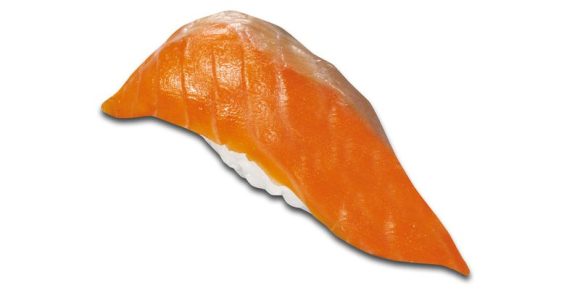
New project makes the popular chain the first of its kind to utilize 100 percent of the fish they acquire.
Among the various conveyor-belt sushi chains across Japan, Kurazushi is one of the most prominent, thanks in part to their creative offerings like sushi rice cola, sushi rice cola shaved ice, and sushi rice cola shaved ice flavored cream puffs.
This time, Kurazushi is serving up perhaps their most daring creation yet: salmon and amberjack sushi!
▼ Oh. Uh, that’s cool. I guess?
That might not sound so amazing until you understand how it arrives on the belt (next to a slice of blueberry cheesecake and the occasional Go-Pro).
Typically, these fish are caught in the ocean and then sent to one of Kurazushi’s processing facilities where they are deboned and cut up before being delivered to a nearby Kurazushi restaurant for the final touches.
However, this standard operation on such a large scale is quite wasteful resulting in 600 tons of unusable meat, bone, and other scraps every year. The challenge for Kurazushi is to find a way to cost-effectively handle this enormous pile of fish entrails.
Meanwhile, Japan’s fish farmers are also facing hard times. The skyrocketing cost of feed is making it hard for them to offer their aquaculture fish at competitive prices. If only there were 600 tons of stuff lying around somewhere that could be cheaply acquired and used for feed….
After someone connected those two dots, the so-called “Sakana 100% Project” was born as a joint effort by Kurazushi and the aquaculture industry to make some fishy lemonade out of their respective lemons.
The way the Sakana 100% Project works is simple: First, a fish is caught in the ocean and sent to processing. After the choice meat is removed, the remaining parts are then converted into feed which can be given to farmed fish. The farmed fish are then grown and sold back to Kurazushi, who in turn sell back the unusable parts as feed again for future generations of sushi.
▼ The figure-nine of life at Kurazushi
In other words Kurazushi is recycling its fish and thus using all of its parts with nothing going to waste.
For many reading this news, the concept of feeding fish to the same species of fish may sound alarming. It was certainly on the minds of many Japanese people upon learning about the Sakana 100% Project.
“Fish are cannibalistic by nature, so it should be okay.”
“Isn’t this what caused mad cow disease?”
“What is this, Xenogears?!”
“I think it’s a great idea and will make the industry more environmentally friendly.”
“It’s probably safer than fish from the ocean and all the chemicals they’ve been exposed to.”
It is hard to say if this process is totally safe, but unlike cattle, most fish are either carnivorous or omnivorous and known to engage in cannibalism. It’s at least a different set of circumstances, but still can’t help but bring up unpleasant thoughts of BSE in people’s minds.
Trying to overcome this stigma will be up to Kurazushi if they want to really get their Sakana 100% Project into full swing with a wider variety of seafood choices. Hopefully it is safe and if so, they can convince people of it, because it certainly looks like a great way to help reduce the burden on fish populations in the ocean, especially in large-scale enterprises like conveyor-belt sushi restaurants.
Source: Mainichi Shimbun, Kinisoku
Images: PR Wire

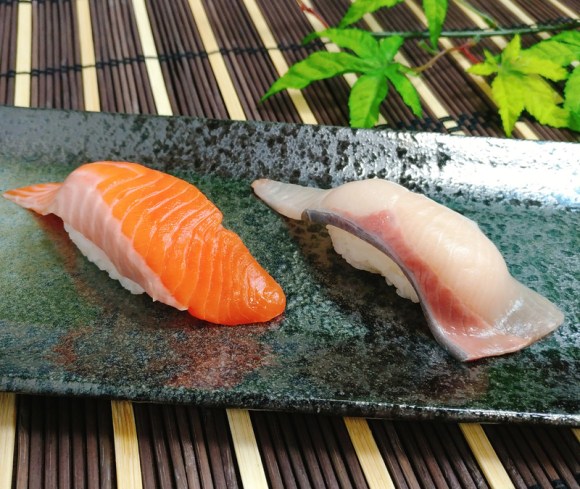
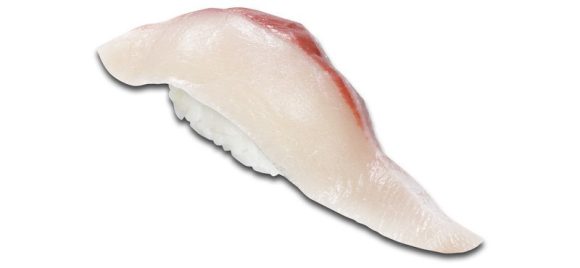
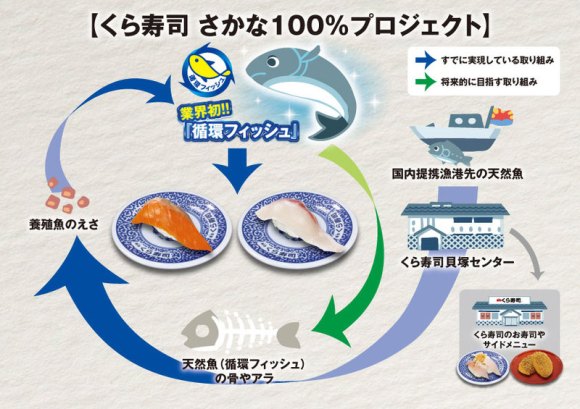
 “Sushi shaved ice” now on the menu at one of Japan’s most popular revolving sushi chains
“Sushi shaved ice” now on the menu at one of Japan’s most popular revolving sushi chains You can now get fugu, Japan’s poisonous blowfish, for under a buck at revolving sushi restaurants
You can now get fugu, Japan’s poisonous blowfish, for under a buck at revolving sushi restaurants Happy Halloween! Now eat your eyeball mochi
Happy Halloween! Now eat your eyeball mochi Sushi chain’s Halloween-themed menu includes black squid-ink curry, purple mayo, and “eyeballs”
Sushi chain’s Halloween-themed menu includes black squid-ink curry, purple mayo, and “eyeballs” This frozen “lucky bag” from a leading sushi chain has absolutely no sushi in it
This frozen “lucky bag” from a leading sushi chain has absolutely no sushi in it Foreigner’s request for help in Tokyo makes us sad for the state of society
Foreigner’s request for help in Tokyo makes us sad for the state of society Japanese city loses residents’ personal data, which was on paper being transported on a windy day
Japanese city loses residents’ personal data, which was on paper being transported on a windy day Should you add tartar sauce to Japanese curry rice? CoCo Ichi makes diners an unusual offer
Should you add tartar sauce to Japanese curry rice? CoCo Ichi makes diners an unusual offer Seaside scenery, history, and so many desserts on Yokohama’s Akai Kutsu【Japan Loop Buses】
Seaside scenery, history, and so many desserts on Yokohama’s Akai Kutsu【Japan Loop Buses】 Red light district sushi restaurant in Tokyo shows us just how wrong we were about it
Red light district sushi restaurant in Tokyo shows us just how wrong we were about it Mt. Koya planning to instate visitor’s tax to cope with huge tourist numbers
Mt. Koya planning to instate visitor’s tax to cope with huge tourist numbers Tokyo Tsukiji fish market site to be redeveloped with 50,000-seat stadium, hotel, shopping center
Tokyo Tsukiji fish market site to be redeveloped with 50,000-seat stadium, hotel, shopping center Beautiful Ghibli sealing wax kits let you create accessories and elegant letter decorations【Pics】
Beautiful Ghibli sealing wax kits let you create accessories and elegant letter decorations【Pics】 Harajuku Station’s beautiful old wooden building is set to return, with a new complex around it
Harajuku Station’s beautiful old wooden building is set to return, with a new complex around it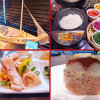 Kyoto breakfast buffet with all-you-can-eat sushi: One of the best possible ways to start a day
Kyoto breakfast buffet with all-you-can-eat sushi: One of the best possible ways to start a day McDonald’s new Happy Meals offer up cute and practical Sanrio lifestyle goods
McDonald’s new Happy Meals offer up cute and practical Sanrio lifestyle goods Japanese ramen restaurants under pressure from new yen banknotes
Japanese ramen restaurants under pressure from new yen banknotes French Fries Bread in Tokyo’s Shibuya becomes a hit on social media
French Fries Bread in Tokyo’s Shibuya becomes a hit on social media Studio Ghibli releases new action figures featuring Nausicaä of the Valley of the Wind characters
Studio Ghibli releases new action figures featuring Nausicaä of the Valley of the Wind characters New private rooms on Tokaido Shinkansen change the way we travel from Tokyo to Kyoto
New private rooms on Tokaido Shinkansen change the way we travel from Tokyo to Kyoto All-you-can-drink Starbucks and amazing views part of Tokyo’s new 170 meter-high sky lounge
All-you-can-drink Starbucks and amazing views part of Tokyo’s new 170 meter-high sky lounge Studio Ghibli releases Kiki’s Delivery Service chocolate cake pouches in Japan
Studio Ghibli releases Kiki’s Delivery Service chocolate cake pouches in Japan New definition of “Japanese whiskey” goes into effect to prevent fakes from fooling overseas buyers
New definition of “Japanese whiskey” goes into effect to prevent fakes from fooling overseas buyers Our Japanese reporter visits Costco in the U.S., finds super American and very Japanese things
Our Japanese reporter visits Costco in the U.S., finds super American and very Japanese things Studio Ghibli unveils Mother’s Day gift set that captures the love in My Neighbour Totoro
Studio Ghibli unveils Mother’s Day gift set that captures the love in My Neighbour Totoro More foreign tourists than ever before in history visited Japan last month
More foreign tourists than ever before in history visited Japan last month New Pokémon cakes let you eat your way through Pikachu and all the Eevee evolutions
New Pokémon cakes let you eat your way through Pikachu and all the Eevee evolutions Sales of Japan’s most convenient train ticket/shopping payment cards suspended indefinitely
Sales of Japan’s most convenient train ticket/shopping payment cards suspended indefinitely Sold-out Studio Ghibli desktop humidifiers are back so Totoro can help you through the dry season
Sold-out Studio Ghibli desktop humidifiers are back so Totoro can help you through the dry season Japanese government to make first change to romanization spelling rules since the 1950s
Japanese government to make first change to romanization spelling rules since the 1950s Ghibli founders Toshio Suzuki and Hayao Miyazaki contribute to Japanese whisky Totoro label design
Ghibli founders Toshio Suzuki and Hayao Miyazaki contribute to Japanese whisky Totoro label design Doraemon found buried at sea as scene from 1993 anime becomes real life【Photos】
Doraemon found buried at sea as scene from 1993 anime becomes real life【Photos】 Tokyo’s most famous Starbucks is closed
Tokyo’s most famous Starbucks is closed One Piece characters’ nationalities revealed, but fans have mixed opinions
One Piece characters’ nationalities revealed, but fans have mixed opinions We asked a Uniqlo employee what four things we should buy and their suggestions didn’t disappoint
We asked a Uniqlo employee what four things we should buy and their suggestions didn’t disappoint Princesses, fruits, and blacksmiths: Study reveals the 30 most unusual family names in Japan
Princesses, fruits, and blacksmiths: Study reveals the 30 most unusual family names in Japan Let’s go to a conveyor belt sushi restaurant — to enjoy delectable desserts!
Let’s go to a conveyor belt sushi restaurant — to enjoy delectable desserts! “Sushi terrorist” found guilty in Nagoya District Court
“Sushi terrorist” found guilty in Nagoya District Court Kura Burger: Japanese sushi chain restaurant offers burgers in Tokyo for a limited time
Kura Burger: Japanese sushi chain restaurant offers burgers in Tokyo for a limited time Japan develops special sushi for pregnant women
Japan develops special sushi for pregnant women Watching these fish feed is a little freaky and frightening【Video】
Watching these fish feed is a little freaky and frightening【Video】 Bunker down for winter with cozy tuna cushions and a five-foot tuna futon cover
Bunker down for winter with cozy tuna cushions and a five-foot tuna futon cover Japanese conveyor belt sushi restaurant chain makes sushi with the help of artificial intelligence
Japanese conveyor belt sushi restaurant chain makes sushi with the help of artificial intelligence New sushi types: chocolate citrus yellowtail and cheddar cheese tempura. Crazy, or crazy good?
New sushi types: chocolate citrus yellowtail and cheddar cheese tempura. Crazy, or crazy good? Kura Sushi adding premium tier pricing for better chance at capsule machine game
Kura Sushi adding premium tier pricing for better chance at capsule machine game Yaizu: Japan’s best sushi market destination even most foodies in Japan have never heard of
Yaizu: Japan’s best sushi market destination even most foodies in Japan have never heard of Mr. Sato tries out Kappa Sushi’s salmon salad mountain, a fun dish available for only one week
Mr. Sato tries out Kappa Sushi’s salmon salad mountain, a fun dish available for only one week Our 7 best conveyor-belt sushi restaurants in Sapporo
Our 7 best conveyor-belt sushi restaurants in Sapporo There’s only one place in Japan where this kind of sushi isn’t red, but why?
There’s only one place in Japan where this kind of sushi isn’t red, but why? Chocolate-fed sushi fish set to become a Valentine’s Day treat in Japan
Chocolate-fed sushi fish set to become a Valentine’s Day treat in Japan Survey reveals the top 10 worst behaviors to have while on a conveyor-belt sushi date
Survey reveals the top 10 worst behaviors to have while on a conveyor-belt sushi date
Leave a Reply